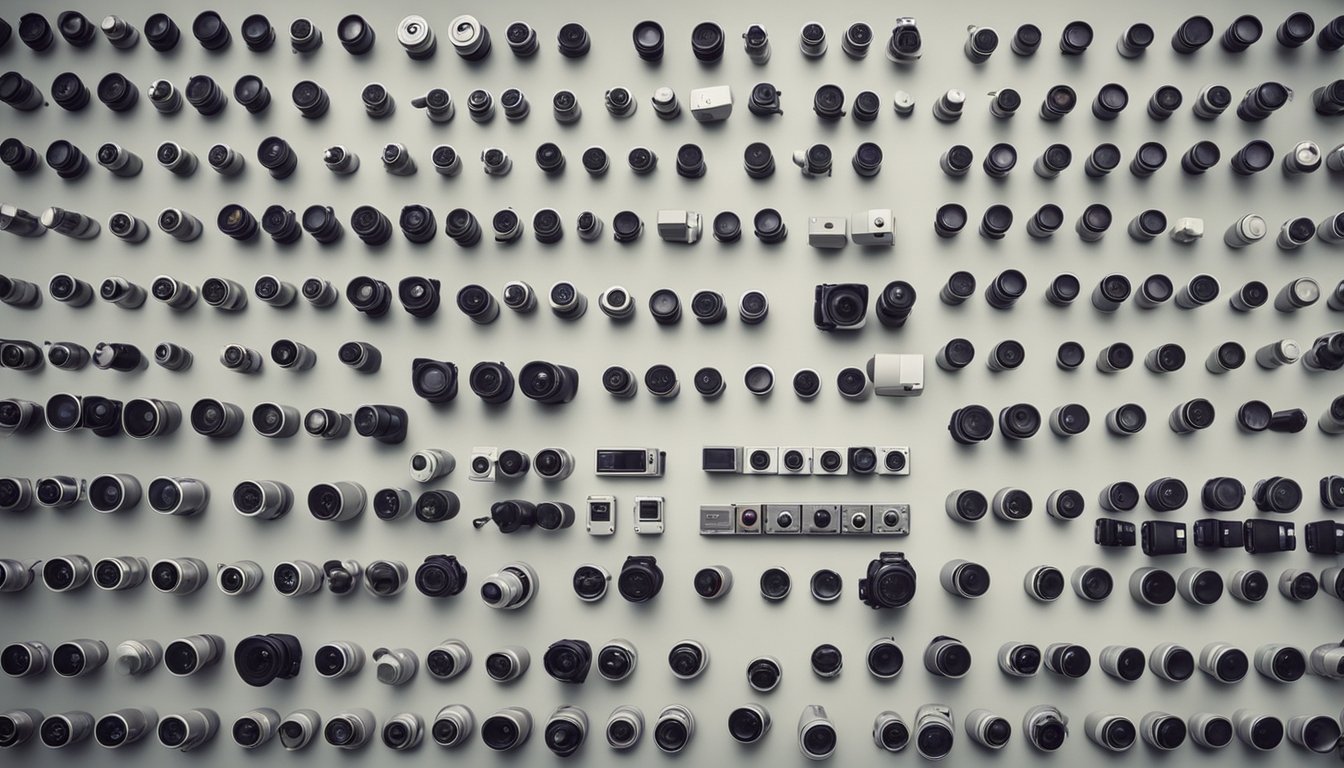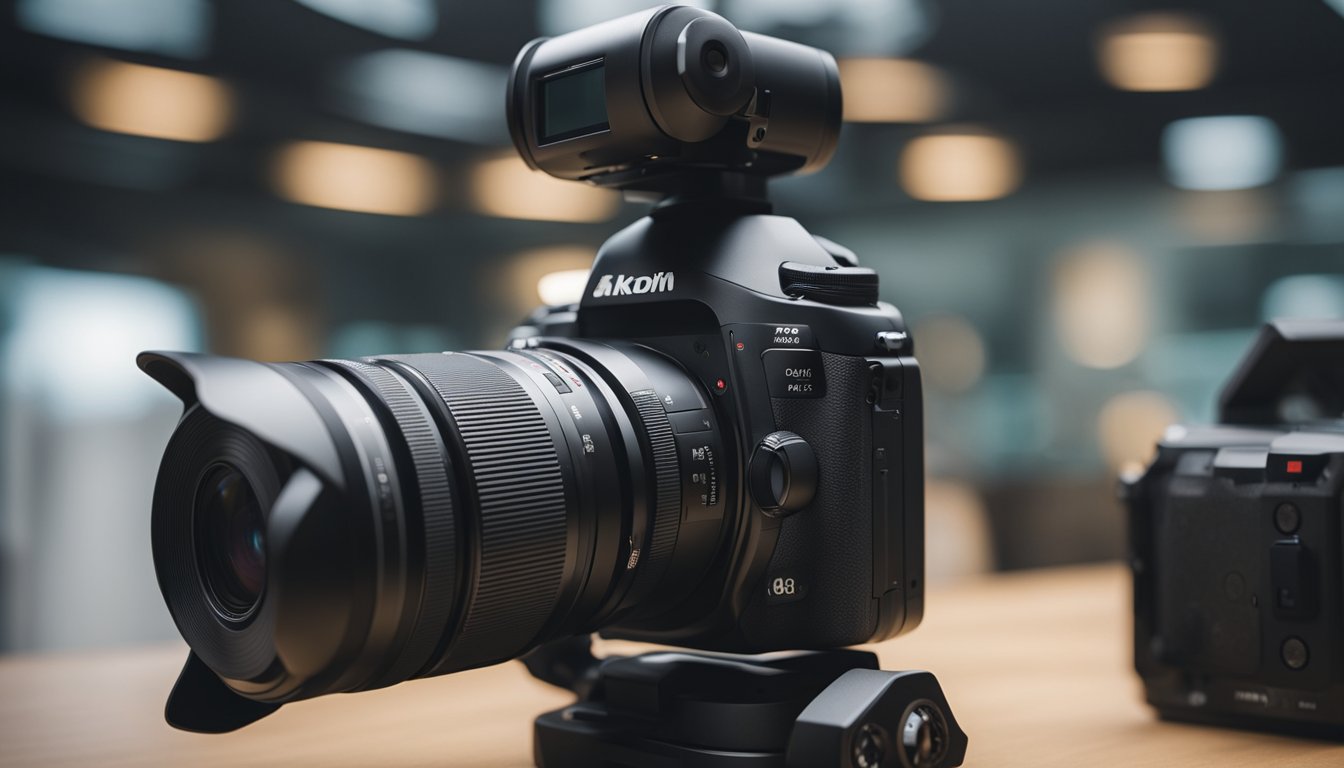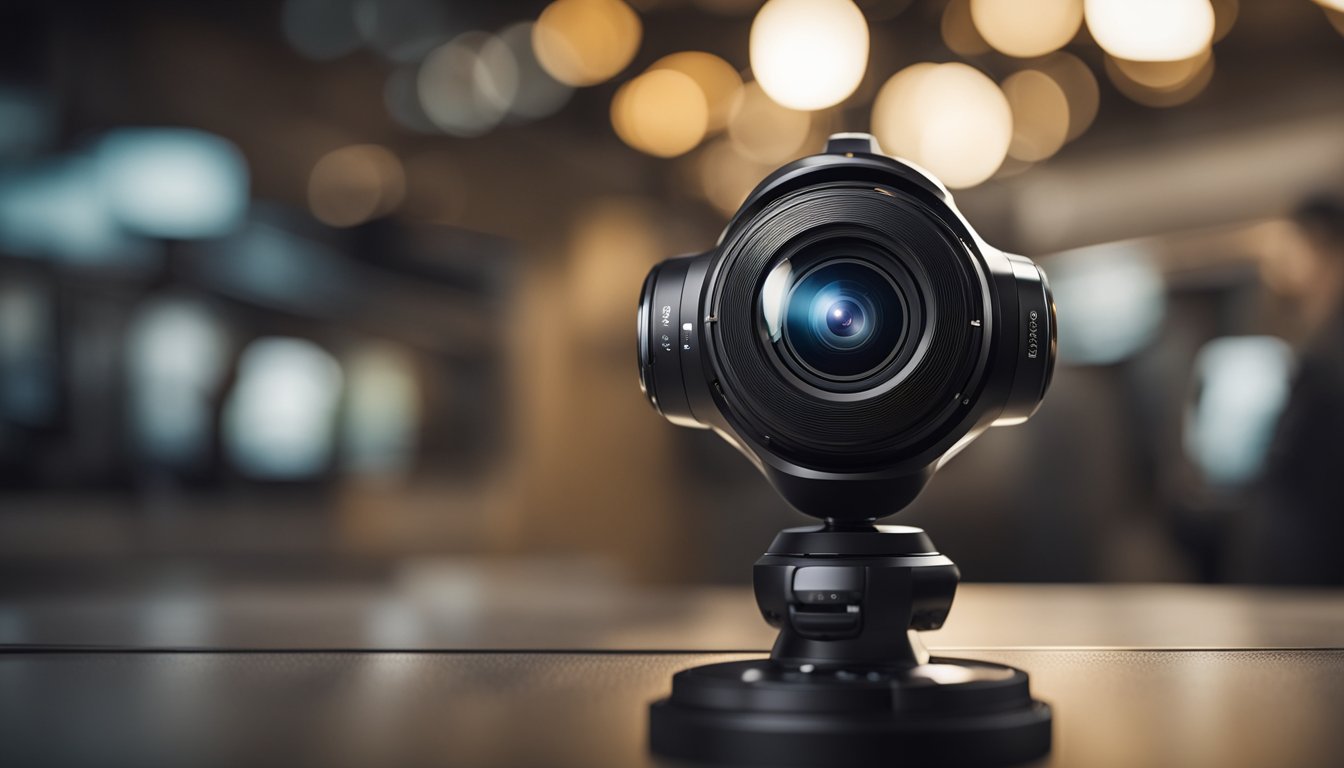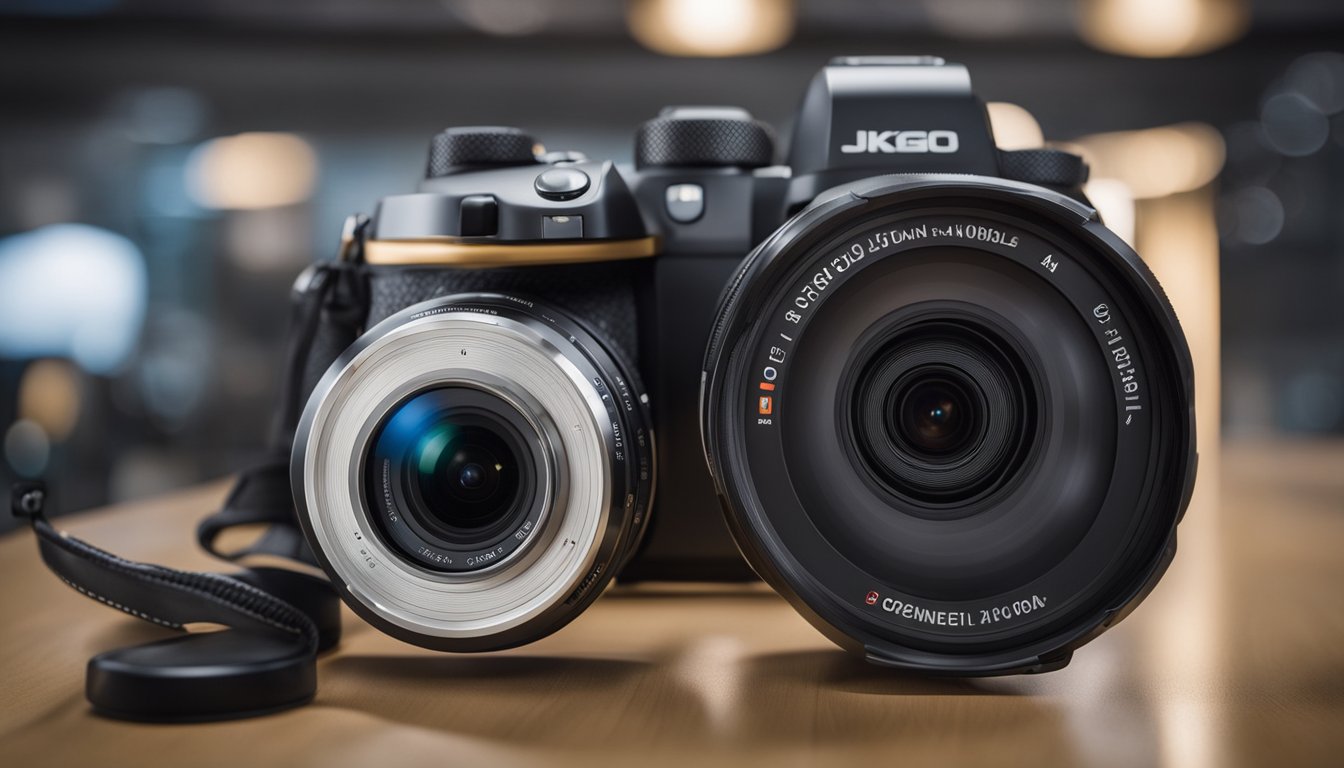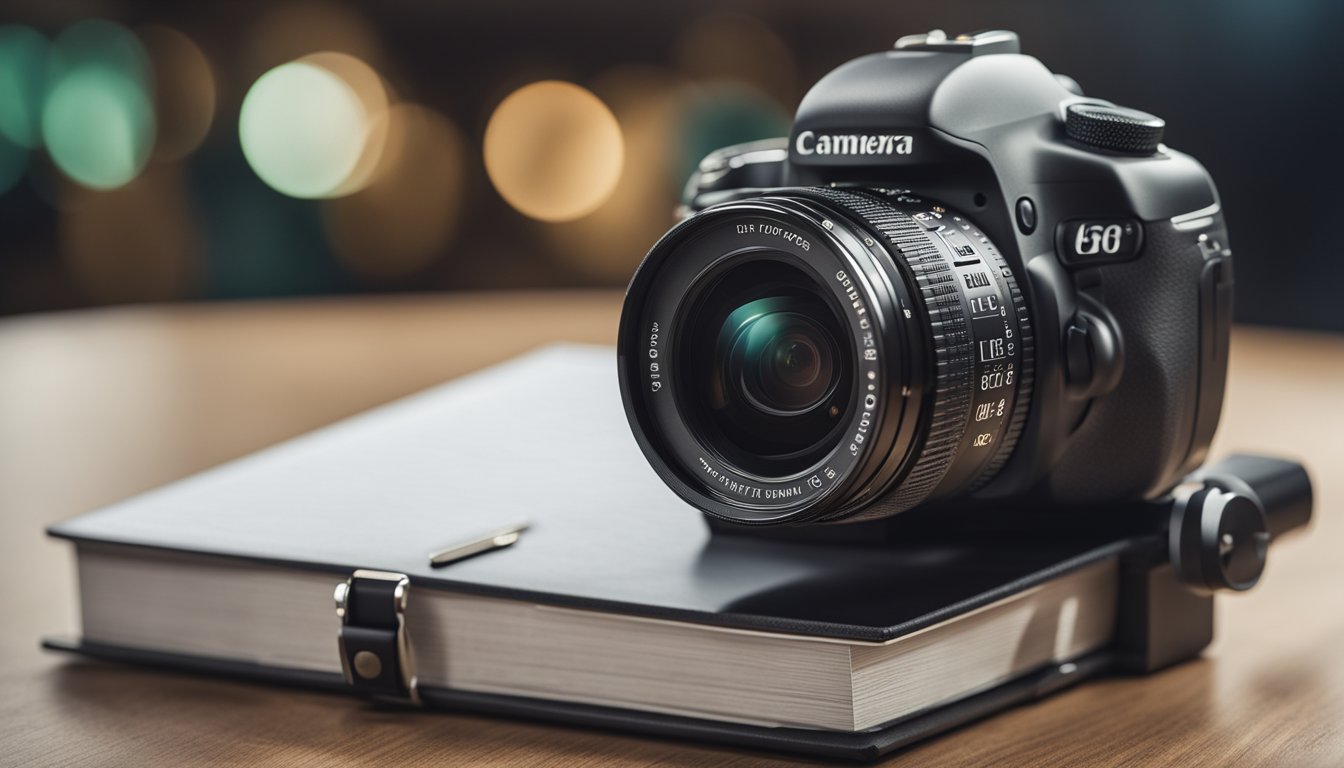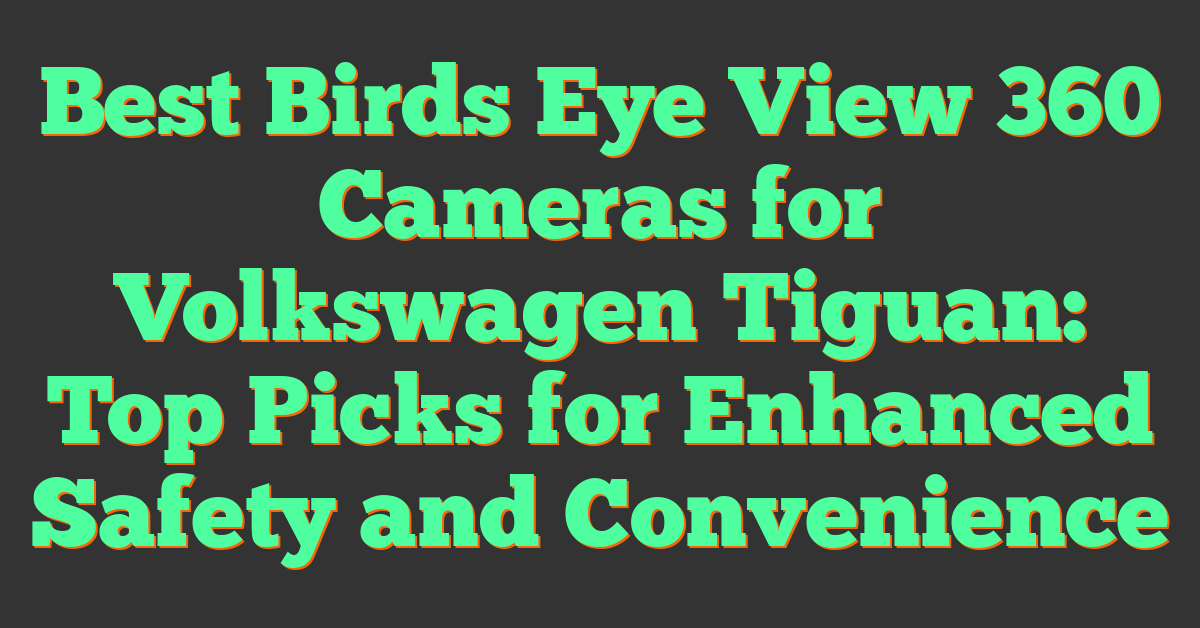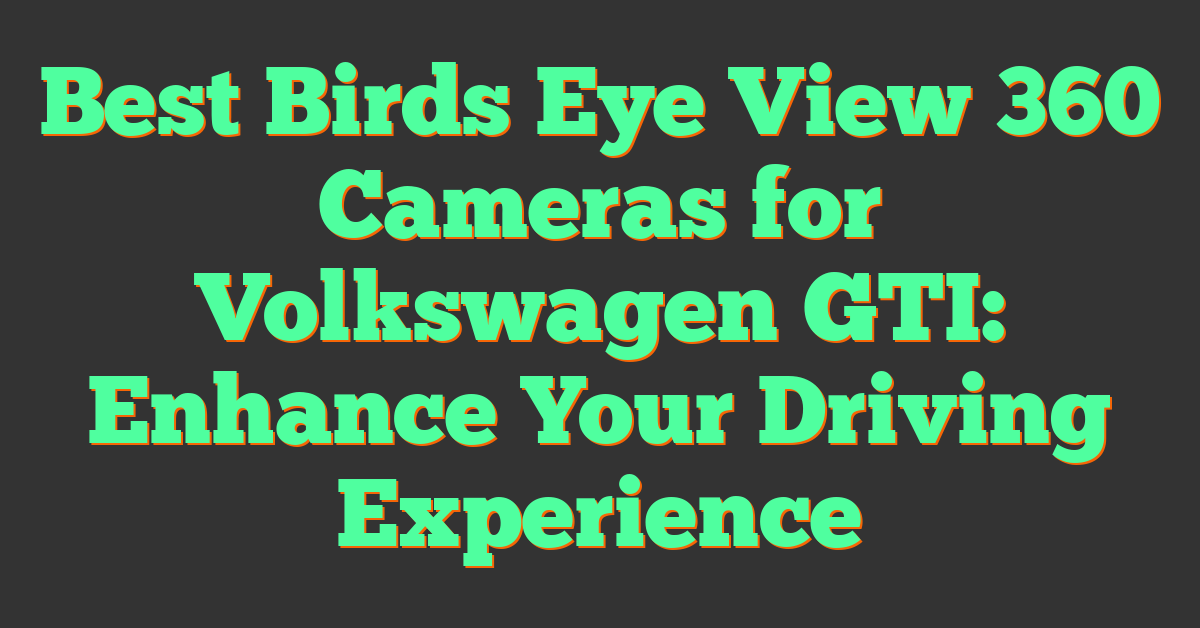If you’re looking to create immersive and interactive content, 360 cameras are the way to go. These cameras capture everything around them, allowing viewers to explore the scene from multiple angles. Whether you’re a professional photographer, videographer, or just someone who loves to document their adventures, a 360 camera can help you take your content to the next level.
In this article, we’ll take a look at the top 10 360 cameras for 2023. We’ll explore the key features to consider when choosing a 360 camera, delve into camera specifications, and examine software and apps that can help you get the most out of your camera. We’ll also provide creative ideas for using 360 cameras, and discuss accessories and add-ons that can enhance your shooting experience. By the end of this article, you’ll have a better understanding of what 360 cameras are all about and be able to choose the right one for your needs.
Key Takeaways
- 360 cameras capture everything around them, providing an immersive and interactive experience for viewers.
- When choosing a 360 camera, consider key features such as resolution, stitching quality, and connectivity options.
- With the right software and accessories, you can take your 360 camera to the next level and create truly unique content.
Understanding 360 Cameras
What Are 360 Cameras
360 cameras are a type of camera that can capture a full 360-degree view of the surrounding environment. Unlike traditional cameras that capture only what is in front of them, 360 cameras use multiple lenses to capture everything around them. This allows you to create immersive photos and videos that give viewers the feeling of being in the middle of the action.
The Technology Behind 360 Cameras
360 cameras use a combination of hardware and software to capture and stitch together multiple images into a seamless panoramic view. The hardware typically includes multiple lenses, sensors, and processors that work together to capture images from all angles. The software then takes these images and combines them into a single, seamless 360-degree view.
Some 360 cameras also use advanced features such as image stabilization, HDR, and low-light performance to improve the quality of the final image. This allows you to capture high-quality photos and videos even in challenging lighting conditions.
When it comes to video, 360 cameras can capture both standard and 360-degree footage. Standard footage is captured in a traditional flat format, while 360-degree footage captures everything around the camera. With 360-degree footage, viewers can control the perspective and direction of the video, allowing for a more immersive viewing experience.
Overall, 360 cameras are an exciting new technology that allows you to capture and share immersive photos and videos. Whether you’re a professional photographer or just looking to capture some fun memories, a 360 camera is a great tool to have in your arsenal.
Top 360 Camera Picks for 2023
https://www.youtube.com/watch?v=oTYqe2fLq7E&embed=true
Looking for a 360 camera to capture your adventures and memories? With so many options available, it can be hard to know where to start. In this section, we’ll highlight the top 360 camera picks for 2023. From the best overall to the best budget option, we’ve got you covered.
Best Overall
If you’re looking for a 360 camera that delivers excellent overall value, look no further than the Insta360 One X3. This camera captures stunning 360 photos and videos with impressive video quality. It also features advanced stabilization technology that ensures smooth footage even when you’re on the move. With its intuitive app and ease of use, the Insta360 One X3 is a great choice for both beginners and professionals.
Best for Professionals
« What is a 360 Camera in Car? A Beginner’s Guide to 360-Degree Car Cameras
Best 360 Camera for Photos: Top Picks for Capturing Stunning Shots »
If you’re a professional photographer or videographer looking for a high-end 360 camera, the GoPro Max is the way to go. This camera offers outstanding video quality and advanced features such as 360-degree audio and six microphones. It’s also waterproof and rugged, making it perfect for outdoor adventures. While it’s a bit pricier than other options, the GoPro Max is worth the investment for professionals who demand the best.
Best Budget Option
On a tight budget? The Kandao QooCam 3 is an excellent choice for those looking for an affordable 360 camera. Despite its low price, it delivers impressive video quality and features such as 4K resolution and 360-degree live streaming. It’s also compact and easy to use, making it a great option for beginners who want to experiment with 360 photography and videography without breaking the bank.
No matter which 360 camera you choose, you’re sure to capture stunning memories that you can relive for years to come.
Key Features to Consider
When it comes to buying a 360 camera, there are several key features that you should consider to ensure that you get the best possible product for your needs. Below, we will discuss some of the most important features that you should keep in mind when shopping for a 360 camera.
Resolution and Image Quality
One of the most important factors to consider when buying a 360 camera is the resolution and image quality. Higher resolution cameras will produce better quality images and videos, which is especially important if you plan to use your camera for professional or commercial purposes.
Durability and Waterproofing
Another important factor to consider when buying a 360 camera is durability and waterproofing. If you plan to use your camera in rugged or extreme environments, you will want to look for a camera that is built to withstand the elements. Many 360 cameras are designed to be waterproof, which is a great feature if you plan to use your camera for underwater photography or videography.
Battery Life and Performance
Battery life and performance are also important factors to consider when buying a 360 camera. You will want to look for a camera that has a long battery life, especially if you plan to use your camera for extended periods of time. Additionally, you will want to look for a camera that has good performance, including fast processing speeds and quick start-up times.
Overall, when shopping for a 360 camera, it is important to consider your specific needs and use cases. By keeping these key features in mind, you can ensure that you find a camera that meets your needs and provides you with high-quality images and videos.
Exploring Camera Specifications
When it comes to choosing the right 360 camera, there are several important camera specifications to consider. In this section, we’ll explore some of the most important ones to help you make an informed decision.
Sensor Size and Quality
The sensor size and quality of a 360 camera is crucial to producing high-quality images and videos. A larger sensor size generally means better image quality, as it can capture more light and detail. Look for cameras with at least a 1/2.3-inch sensor or larger for the best results.
Lenses and Field of View
Another important factor to consider is the lenses and field of view of the camera. Most 360 cameras use fisheye lenses to capture a wide field of view, but the quality and angle of the lenses can vary. Look for cameras with high-quality lenses and a wide field of view (at least 180 degrees) for the best results.
Stabilization Technologies
360 cameras are notorious for producing shaky footage, but many cameras now come with built-in stabilization technologies to help smooth out the footage. Look for cameras with image stabilization or stabilization technologies such as FlowState or HyperSmooth to ensure your footage is as smooth as possible.
Overall, when choosing a 360 camera, it’s important to consider the sensor size and quality, lenses and field of view, and stabilization technologies to ensure you get the best results.
Software and Apps
https://www.youtube.com/watch?v=ennYbERPjbU&embed=true
When it comes to 360 cameras, software and apps are essential components that help you edit, share, and stitch your footage. In this section, we’ll discuss some of the best editing and stitching software, as well as mobile and desktop apps that will take your 360 experience to the next level.
Editing and Stitching Software
One of the most important aspects of 360 cameras is the ability to stitch your footage together. Most cameras come with automatic stitching software, but if you want more control over your footage, you may want to consider using third-party software. Some popular options include:
- AutoPano: This software is known for its advanced stitching algorithms and intuitive interface. It also offers features like automatic color correction and exposure compensation.
- PTGui: PTGui is another popular option for stitching 360 footage. It offers a range of tools for adjusting the stitching and alignment of your footage, as well as features like HDR stitching and lens calibration.
- Hugin: Hugin is a free and open-source software that offers a range of features for stitching 360 footage. It also includes tools for adjusting exposure, color balance, and other aspects of your footage.
Mobile and Desktop Apps
Mobile and desktop apps are another important aspect of the 360 camera experience. They allow you to view and share your footage, as well as edit and add effects. Some popular apps include:
- Google Street View: Google Street View is a popular app for viewing and sharing 360 photos and videos. It also offers features like automatic GPS tagging and the ability to create your own 360 tours.
- Insta360: Insta360 offers a range of mobile and desktop apps for editing and sharing your 360 footage. Their apps include features like automatic stitching, filters, and effects.
- Ricoh Theta: Ricoh Theta is another popular app for viewing and sharing 360 photos and videos. It also offers features like automatic stitching and the ability to adjust exposure and white balance.
Overall, having the right software and apps can make a big difference when it comes to getting the most out of your 360 camera. Whether you’re looking to stitch your footage together or share it with the world, there are plenty of options to choose from.
Creative Uses for 360 Cameras
https://www.youtube.com/watch?v=ajOD4egNr9g&embed=true
360 cameras are not just for capturing panoramic views or immersive videos. They have a wide range of creative uses that can help you stand out as a content creator. Here are some of the most popular ways to use 360 cameras:
Virtual Tours and Real Estate
If you’re a real estate agent or a business owner, you can use 360 cameras to create virtual tours of your properties. This is a great way to showcase your properties to potential buyers or renters without them having to be physically present. You can also use 360 cameras to create virtual tours of museums, art galleries, and other tourist attractions.
Action Sports and Adventure
360 cameras are perfect for capturing action sports and adventure activities such as skiing, snowboarding, skydiving, and surfing. With a 360 camera, you can capture all the action from different angles and create immersive videos that make the viewer feel like they’re right there with you.
Professional Photography and Videography
Professional photographers and videographers can use 360 cameras to capture stunning panoramic shots and create immersive videos. 360 cameras are also great for capturing events such as weddings, concerts, and festivals. You can use 360 cameras to create time-lapse videos, slow-motion videos, and much more.
No matter what your creative vision is, 360 cameras can help you achieve it. Whether you’re a content creator, a professional photographer, or just someone who loves to capture action videos, a 360 camera can help you take your content to the next level.
Accessories and Add-Ons
https://www.youtube.com/watch?v=QDGa62anZsY&embed=true
If you’re looking to take your 360 camera game to the next level, there are a variety of accessories and add-ons available to help you achieve your goals. In this section, we’ll explore some must-have 360 camera accessories as well as add-ons that can enhance your camera’s functionality.
Must-Have 360 Camera Accessories
-
Tripod: A sturdy tripod is a must-have accessory for any 360 camera enthusiast. It provides stability and enables you to take long-exposure shots without any blur. Some popular tripod options include the Manfrotto MT190XPRO 4 and the Peak Design Travel Tripod.
-
Microphones: Good audio is essential for creating immersive 360 videos. A directional microphone can help you capture high-quality sound that matches your visuals. The Rode VideoMic Pro and the Zoom H1n are popular options.
-
Mountable: Mountable accessories like bicycle or helmet mounts can help you capture unique perspectives that you wouldn’t be able to achieve otherwise. The GoPro Chesty and the Peak Design Capture Clip are popular options.
Enhancing Your Camera with Add-Ons
-
Lens Attachments: Lens attachments can help you capture wider angles or closer shots. The Insta360 One R Wide Angle Lens and the Moment Anamorphic Lens are popular options.
-
Filters: Filters can help you achieve different looks and effects in your 360 photos and videos. The Tiffen 360 ND Filter and the PolarPro 360 Filter Set are popular options.
-
Waterproof Housing: If you’re planning on using your 360 camera for water sports or other activities in wet environments, a waterproof housing is a must-have accessory. The Insta360 One R Dive Case and the GoPro HERO9 Black Waterproof Housing are popular options.
In conclusion, there are many accessories and add-ons available to help you get the most out of your 360 camera. Whether you’re looking to capture unique perspectives, improve your audio quality, or achieve different looks and effects, there’s an accessory out there that can help you achieve your goals.
360 Cameras in Low Light
https://www.youtube.com/watch?v=2l1Z06zZ-lc&embed=true
Low-light photography is always challenging, and it’s no different when it comes to 360 cameras. However, some cameras perform better than others in low-light conditions. Here are some of the best 360 cameras for low-light photography.
Best Cameras for Low-Light Conditions
1. Ricoh Theta V: This camera is known for its excellent performance in low-light conditions. It has a maximum ISO sensitivity of 6400, which means it can capture great images even in dimly lit environments. Additionally, its F2.0 lens helps to capture more light, resulting in brighter and sharper images.
2. Insta360 ONE X2: This camera has a larger sensor than its predecessor, which means it can capture more light and produce better images in low-light conditions. It also has a maximum ISO sensitivity of 3200, which is quite impressive for a 360 camera.
3. GoPro MAX: This camera has a maximum ISO sensitivity of 3200, which means it can capture decent images in low-light conditions. It also has a feature called Max HyperSmooth, which helps to stabilize the footage, resulting in smoother and more stable videos.
Tips for Low-Light Photography
Here are some tips to help you capture better images in low-light conditions:
- Use a tripod or a stabilizer to keep the camera steady. This will help to reduce camera shake and produce sharper images.
- Increase the ISO sensitivity of your camera. However, be careful not to increase it too much, as this can result in grainy images.
- Use a wide aperture (low f-stop number) to let more light into the camera. This will help to produce brighter images.
- Use a slower shutter speed to let more light into the camera. However, be careful not to use a shutter speed that is too slow, as this can result in blurry images.
By following these tips and using one of the best 360 cameras for low-light conditions, you can capture great images even in challenging lighting situations.
Streaming and Connectivity
https://www.youtube.com/watch?v=CJe7ey23Lvk&embed=true
If you plan to use your 360 camera for live streaming, it is important to consider its live streaming capabilities. Some cameras have built-in live streaming features, while others require additional accessories or software.
Live Streaming Capabilities
The Hollyland 360 Camera is a great option for live streaming, with its dual-lens design that captures everything around you. It allows you to reframe videos to fit 16:9 screens and livestream stunning footage on streaming or VR platforms.
The Insta360 X3 is another great option for live streaming, with its support for 5.7K30 video and Active HDR for better results in mixed lighting. It also offers several creative features to enhance your live stream.
Wi-Fi and GPS Features
Most 360 cameras come with Wi-Fi and GPS features that allow you to easily transfer your photos and videos to your phone or computer. This feature is especially useful if you want to share your content on social media or edit it on your computer.
The GoPro Max offers Wi-Fi and Bluetooth connectivity, making it easy to transfer your content to your phone or computer. It also has built-in GPS, which allows you to track your location and add location data to your photos and videos.
The Insta360 Evo also has Wi-Fi and Bluetooth connectivity, as well as GPS. It also has a unique folding design that allows you to switch between 360 and 180-degree capture modes.
Overall, when choosing a 360 camera for streaming and connectivity, it is important to consider its live streaming capabilities, as well as its Wi-Fi and GPS features.
Choosing the Right 360 Camera
https://www.youtube.com/watch?v=5MvtlBYOFHg&embed=true
When it comes to choosing the right 360 camera, there are many factors to consider. From budget-friendly choices to high-end cameras for professionals, the market is full of options that cater to different needs and preferences. In this section, we’ll explore some of the best options available in the market, and help you choose the right one for you.
Budget-Friendly Choices
If you’re on a tight budget, you don’t have to compromise on the quality of your 360 camera. There are many affordable options available in the market that offer great value for money. Some of the best budget-friendly choices include:
-
Insta360 ONE R: This camera is a great option for those who want a versatile and affordable 360 camera. It offers 5.7K video, waterproofing, and a modular design that allows you to switch between different lenses and modules.
-
Ricoh Theta SC2: The Ricoh Theta SC2 is a compact and affordable 360 camera that offers 4K video and a user-friendly interface. It’s a great option for beginners who want to dip their toes into the world of 360 photography.
-
GoPro MAX: While it’s not the cheapest option on this list, the GoPro MAX offers great value for money. It offers 5.6K video, waterproofing, and a rugged design that’s perfect for outdoor adventures.
High-End Cameras for Professionals
If you’re a professional photographer or videographer, you’ll need a high-end camera that offers advanced features and superior image quality. Here are some of the best high-end cameras available in the market:
-
Insta360 Pro 2: This camera is a top-of-the-line option that offers 8K video, advanced image stabilization, and a range of professional features. It’s a great option for those who want the best of the best.
-
Kandao QooCam 8K: The Kandao QooCam 8K is another high-end camera that offers 8K video and a range of advanced features. It’s a great option for professional photographers and videographers who want the best image quality possible.
-
Z Cam V1 Pro: The Z Cam V1 Pro is a professional-grade 360 camera that offers 8K video, advanced image stabilization, and a range of professional features. It’s a great option for those who want the best image quality and performance.
When choosing the right 360 camera, it’s important to consider your budget, your needs, and the overall value that the camera offers. Whether you’re a beginner or a professional, there’s a 360 camera out there that’s perfect for you.
Frequently Asked Questions
What are the key features to consider when purchasing a 360 camera?
When purchasing a 360 camera, there are several key features to consider. These include the camera’s image and video quality, battery life, ease of use, and compatibility with your device. Additionally, you should consider the camera’s durability, waterproofing, and stabilization features.
How do 360 cameras differ from traditional action cameras?
360 cameras differ from traditional action cameras in that they capture a full 360-degree view of the surroundings, rather than just a single point of view. This allows for a more immersive experience for the viewer. Additionally, 360 cameras often have more advanced features such as live streaming and virtual reality compatibility.
Which 360 camera offers the best value for those on a budget?
If you are on a budget, the Insta360 ONE R and the Ricoh Theta SC2 are both great options. These cameras offer high-quality 360-degree photos and videos at an affordable price.
What are the best 360 cameras for outdoor or motorcycle use?
For outdoor or motorcycle use, you will want a camera that is durable and waterproof. The GoPro MAX and the Insta360 ONE R are both great options for outdoor use. These cameras are waterproof and can withstand rough terrain.
Can you recommend a high-quality 360 camera for security purposes?
If you are looking for a 360 camera for security purposes, the Hikvision DS-2CD63C5G0-IVS is a great option. This camera offers high-quality 360-degree footage and has advanced security features such as motion detection and facial recognition.
What are the price ranges for quality 360 cameras currently on the market?
The price range for quality 360 cameras currently on the market varies widely. Budget options can be found for under $200, while high-end cameras can cost upwards of $1,000. The average price range for a quality 360 camera is between $300 and $600.


